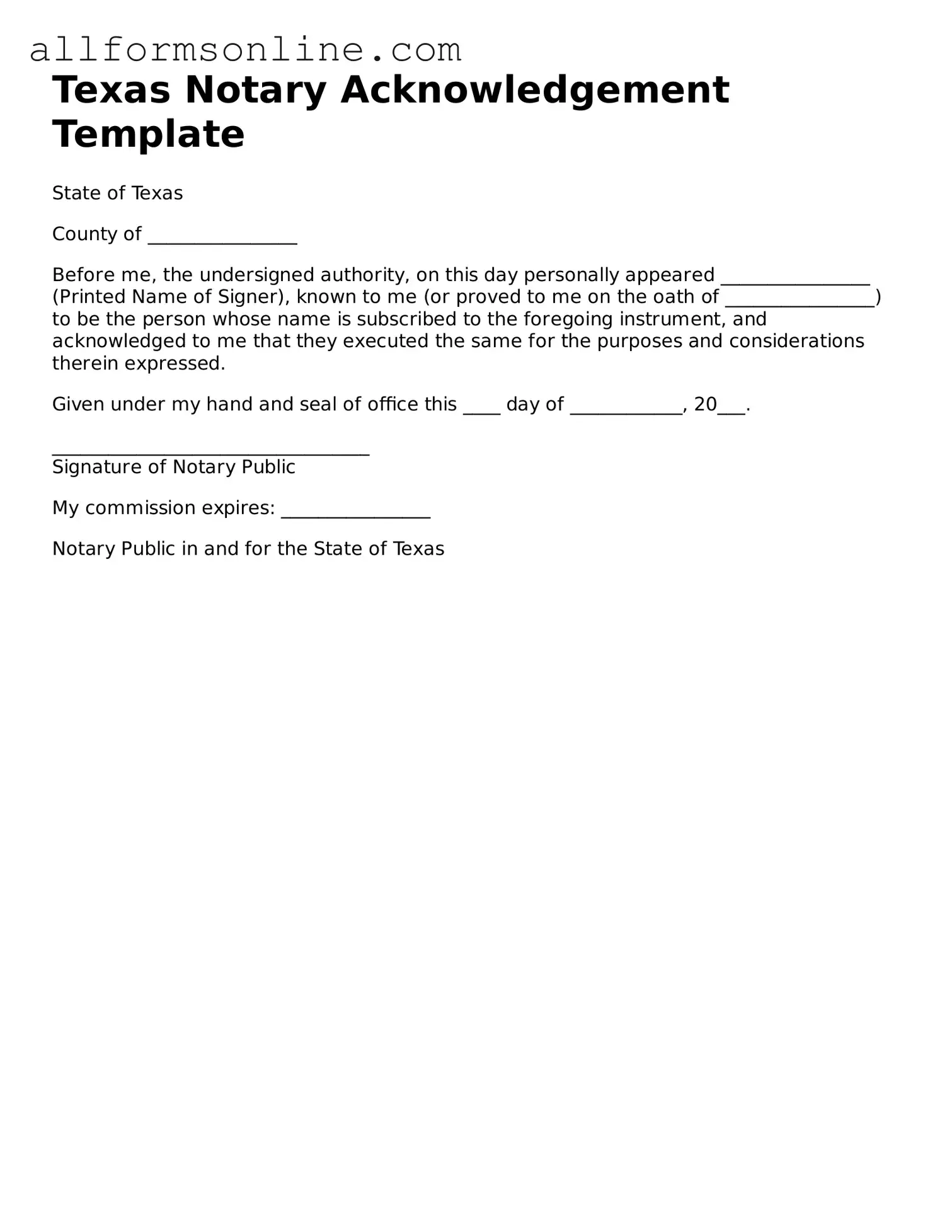What is a Texas Notary Acknowledgement form?
The Texas Notary Acknowledgement form is a document used to verify the identity of individuals signing a legal document. It confirms that the signer appeared before a notary public and acknowledged their signature on the document. This form helps to ensure the authenticity of the signature and the intent of the signer.
When is a Notary Acknowledgement required in Texas?
A Notary Acknowledgement is typically required when a document needs to be recorded with a government entity, such as a deed, mortgage, or other legal instruments. It may also be necessary for certain contracts and affidavits. Always check the specific requirements for your document type.
Who can act as a notary public in Texas?
In Texas, a notary public must be at least 18 years old, a resident of Texas, and must not have been convicted of a felony. They must also complete the required training and obtain a notary commission from the state. Notaries are authorized to perform acknowledgements, administer oaths, and certify copies of documents.
How do I complete a Notary Acknowledgement form?
To complete the form, the signer must appear before the notary public. The notary will ask the signer to provide identification and confirm that they are signing voluntarily. The notary will then complete the form by filling in the necessary details, including the date, the signer's name, and their own signature and seal.
Is there a fee for notarization in Texas?
Yes, notaries in Texas are allowed to charge a fee for their services. The maximum fee for a standard acknowledgment is $6 per signature. However, notaries may charge additional fees for travel or other services, so it’s advisable to confirm the total cost beforehand.
Can a Notary Acknowledgement be performed remotely in Texas?
Yes, Texas allows remote online notarization. This means that a notary can perform an acknowledgment via audio-visual technology. Both the notary and the signer must be present during the online session, and the notary must follow specific guidelines set by the state.
How long is a Notary Acknowledgement valid in Texas?
The Notary Acknowledgement itself does not expire, but the underlying document may have its own validity period. It’s important to check the specific requirements for the document you are working with to ensure it remains enforceable.
What should I do if my Notary Acknowledgement is rejected?
If a Notary Acknowledgement is rejected, review the reasons for the rejection. Common issues include missing information, improper signatures, or lack of a notary seal. Correct any issues and consider re-submitting the document for notarization.
Where can I find a Texas Notary Acknowledgement form?
You can find the Texas Notary Acknowledgement form online through various legal document websites or the Texas Secretary of State's website. Ensure that you are using the most current version of the form to avoid any issues.
Do I need to provide identification when signing a Notary Acknowledgement?
Yes, the signer must provide valid identification to the notary public. Acceptable forms of ID include a Texas driver’s license, a U.S. passport, or any government-issued ID that includes a photo. This step is crucial for verifying the signer's identity.
